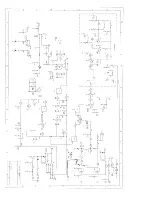
/Kits/1296-144CK.doc
1
8/15/2011
DEM Part Number 1296-144 PCB, K and CK
23 cm Transverter PCB, Board Kit, and Complete Kit
Specifications
Frequency range:
1296 MHz. = 144 MHz.
Noise Figure and Gain:
<1.5 dB NF, > 17 dB Gain with >+5dBm IP3 Input
Power Output:
3 watts. Lower levels with different configurations
TXIF Drive level:
1 mW to 10 Watts maximum dependant on IF configuration.
DC Power requirements:
13.8 VDC nominal. 11 to 16.5 VDC operational.
DC Current drain:
500 mA to 2.5 Amps depending on output power level.
Operational Overview
The DEM 1296-144 is a 23 cm to 144 MHz transmit and receive converter. It has a linear
output power of approximately 3 watts and may be achieved with as little as 10 mW or a maximum
of 10 W of IF drive with the correct IF configuration. The highlight of this transverter is the receive
section. The design uses a PHEMT that has a high-pass tuned input circuit biased for High IP3
output performance. It is followed by two 3 pole helical filters, a high output IP3 MMIC gain stage,
and a high level mixer with a IP3 output of +30 dBm. This design provides a sensitive low noise
receiver with superior out of band signal rejection that will tolerate IP3 input signals > +5 dBm!
Other improvements over the previous versions of 1296 transverters are in the Local Oscillator
and TX section. The base oscillator of the local oscillator circuit is housed in a shielded enclosure
on the circuit board. This shield coupled with the higher frequency base oscillator operation, (192
MHz), reduces the amount of spurious output while providing greater temperature stability. The
transmit section has improved filtering to eliminate all other spurious emissions. The DEM 1296-
144 has a built in transmit / receive relay on the RF side with provisions for external switching for
adding a high power amplifier or preamplifier to your 23 cm system. The 144 MHz IF levels and
options are adjustable on both transmit and receive with a dynamic range of approx. 25 dB. This
is useful for adjusting your maximum output power and setting the "S" meter level on your IF
receiver. The IF connections are via BNC connectors. Options have been provided for a key line
input PTT-H (+1 to 15 VDC) or PTT-L (a closure to ground) and auxiliary contacts on either
transmit or receive with a common line for many applications. The control, power, and auxiliary
connections are via RCA jacks. The 23 cm connectors are Type 'N' or SMA if separate TX and RX
ports are chosen. The 1296-144 is housed in our standard 4.125" x 1.875" x 7.75" extruded
aluminum enclosure that matches all of our other microwave transverters.
General Information
The detailed technical design information is posted in the library section of the Down East
Microwave Web site. The paper stresses the receiver’s immunity to out of band signals and
covers the design stage by stage. The 1296-144 kits and PCB are supplied with a schematic and
component placement diagram. The PCB is made of 0.062” thick Fiberglass G10 material. It has
plated 1 oz. copper with plated through ground Vias and will only require a general understanding
of the circuit design accompanied by good construction practices to produce a great working
transverter. The circuit board alone may be assembled and used in many different configurations.
It is perfect for the experimenter in the 23 cm band and requires very little microwave expertise.
The PCB by itself doesn’t require external mechanical support but will require a special
mounting technique. Down East Microwave will guaranty the performance of our circuit board
with your configuration but will not repair any transverters built from the 1296-144PCB unless
Содержание 1296-144 CK
Страница 16: ......


































